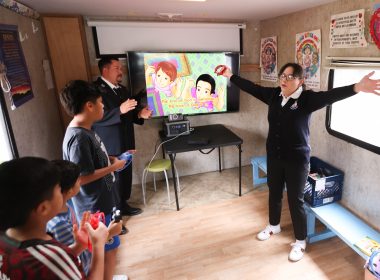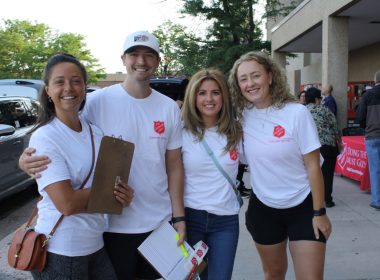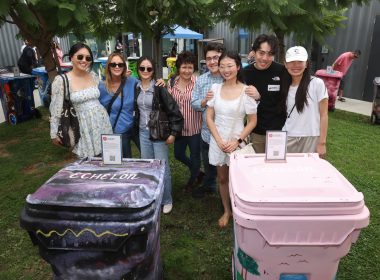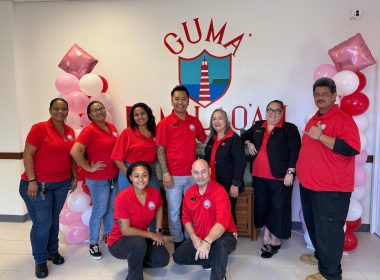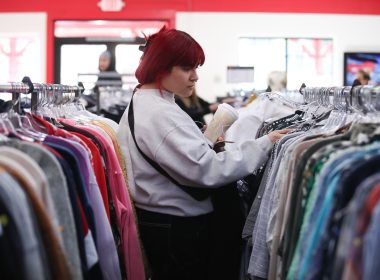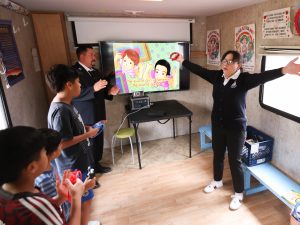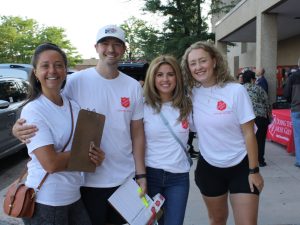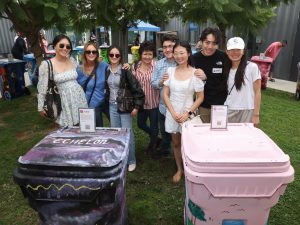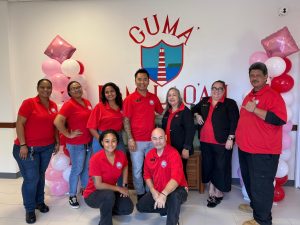The Salvation Army San Francisco Kroc Center After School Program recently expanded to include a transitional kindergarten (TK) classroom—a bridge between preschool and kindergarten that helps students build a strong foundation for future academic success.
In San Francisco’s Tenderloin neighborhood, this program fulfills a critical need.
“Our area has the lowest income in the city and encompasses people who speak more than 14 different languages and dialects,” said Mónica Ríos-Ventura, San Francisco Kroc Center Education Manager. “The program is in high demand. We focus on quality over quantity to make sure ratios are maintained low.”
Ríos-Ventura said the free program quickly grew from five to 12 students with a waitlist after launching this past summer. Since many local after school programs at other organizations can only take children five years of age or older—or are already at capacity—The Salvation Army’s TK program helps fill that gap for the four and five-year-olds in the area, some of whom have single parents.
“There are no qualifications to get in—most of our kids are from the neighborhood,” she added. “Being able to offer that sense of stability at an even earlier age is absolutely key in their development—to have a space to feel safe—and that they can count on someone.”
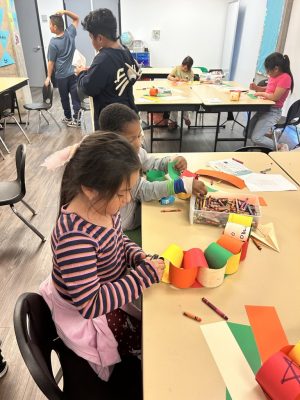
The parents have been “super-appreciative” to have the extra time and support, too. Five days a week, Monday through Friday from around 1:30 p.m. to 6 p.m., the students are picked up with the help of the Tenderloin Community Benefit District (TLCBD), a partner organization whose staff wears vests and communicates with one another via walkie-talkie to help direct traffic and redirect or re-route students to ensure their safe arrival at the Kroc Center.
In the Tenderloin, that often means navigating around active drug use on the sidewalks, an issue that led San Francisco Mayor London Breed to declare a state of emergency for the district last year, and has accounted for a record number of overdose deaths in the past few years as well as trauma and behavioral concerns for the community’s children.
But Ríos-Ventura said that while the Kroc Center added the TK classroom and programming based on an identified need in the community, their leadership’s vision is to journey with kids from TK all the way through college to provide the opportunity for the neighborhood’s families to have access and transformation.
“We’re in it for the long haul,” said San Francisco Kroc Center Corps Officer Captain Arwyn Rodriguera. “We want to journey with the families so they know they can call us and have another place to go back to— we want to help make the Tenderloin a good home.”
Part of that vision involves securing additional funding in hopes of supporting the program’s growth as well as cultivating specialized staff to help teach the mostly Spanish-speaking student population, as well as those who need additional social and emotional support.
Rodriguera said the Kroc Center’s after-school program currently serves about 60 students and the goal is to increase to 130 by the summer. An important part of creating capacity to help more families involves expanding support for students who have an individualized education program (IEP).
The Kroc Center’s behavioral specialist—who joined the team full-time in April—has been what Rodriguera called “a miracle worker” in helping to provide trauma-informed support for students, parents and staff alike.
“We want to journey with the families so they know they can call us and have another place to go back to— we want to help make the Tenderloin a good home.”—Captain Arwyn Rodriguera
That supportive atmosphere is part of what makes The Salvation Army special, said Ríos-Ventura, adding, “we will try to pull resources from other programs to ensure the kids are safe and supported.”
The focus is on mentorship and service from a young age. “During the summers, we invite high school students to work for us and we provide professional development,” she explained. “Then from there, they turn into our college interns and employees at camp or during the school year, and we provide supervision and support.”
That model has already helped shape the lives of community members who now want to give back, she added: “One of the Kroc Center’s current after-school employees went from being a student to a counselor in training (youth staff) to now being an adult staff member. Our goal is to continue to give those opportunities to our students so they can give back to the younger students by sharing what they enjoyed and help them reach for their dreams.”
At the moment, Ríos-Ventura and Rodriguera said those dreams include reworking the much-needed program by continuing to be more intentional in how they teach, adding more songs and games, and adding more training and resources for the staff.
They said monetary donations are always helpful and community members are encouraged and welcome to apply as volunteers as well.
“The volunteers often become mentors,” Ríos-Ventura said. “They help give them confidence.”
Do Good:
- How do we treat everyone with love and kindness, as if they were our neighbor? Get the Do Good Family Roadmap and take a 4-week journey for families in how to be a good neighbor. Follow the guide to see what the Bible says about the art of neighboring and take tangible steps together on your printable roadmap to be a caring, helpful, welcoming and supportive neighbor right where you are.

